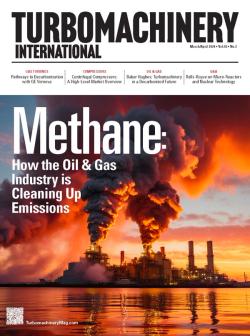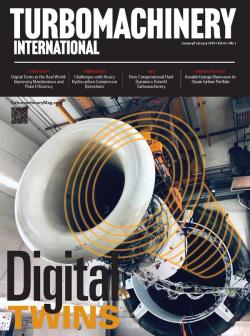
OR WAIT null SECS
© 2024 MJH Life Sciences™ and Turbomachinery Magazine. All rights reserved.
AIR TURBO-COMPRESSOR PACKAGES
Compressed air is one of the most important utilities in industrial plants. Instrument air is widely used to operate instruments, control systems, actuators and pneumatic systems. Instrument air is compressed clean air, which is distributed throughout facilities. It passes through different filtration and dryer stages. Even the slightest dirt, debris or moisture can damage sensitive instrument and control devices.
Many types of compressor are used in instrument air and plant air packages. Electric motor driven, water-cooled air compressors of the dry, oil-free type are commonly specified. The compressor package should come with auxiliary equipment to provide automatic, safe and reliable operation.
Air system guidelines
Guidelines for the pressure of air systems are usually set somewhere between 6.5 Barg and 11 Barg. However, many plants specify it at 8 Barg and not to exceed 10 Barg. Compressors, dryers, and receivers should also provide adequate capacity, pressure, reliability and availability.
Compressors are typically in n+1 configurations; n compressors are on duty with one on standby; n+2 configurations have been used in critical applications. The standby compressor should automatically operate when the other is out of order or its receiver pressure drops.
Positive displacement compressors, particularly dry screw-type air compressors and dry reciprocating air compressors, have been used in many applications. However, they cannot offer the reliability and availability of turbo-compressors. Various kinds of centrifugal compressor design are used when high reliability and availability are needed.
Centrifugal compressors are commonly specified for many applications. Air compressors are water-cooled to produce oil-free air. Impellers are usually of high-quality stainless steel and of welded, milled or cast construction. Integrally geared centrifugal compressors have become popular for air services because they offer lower cost, a compact and lightweight design, reliability and performance.
Impeller pinion bearings are usually of the oil-lubricated journal type that absorb thrust in both directions and can cope with high speed. Packaged compressors are best with a directly coupled electric motor drive, mounted on a common baseplate.
The package should also include air piping, non-return valves, safety valves, intercoolers, after-coolers, cooling water piping, lubricating oil system, local instruments, local control devices and acoustic canopy.
The compressor should also have an air-inlet filter and silencer, preferably incorporated into a common unit. Access is provided for ease of maintenance.
Surge is a major consideration with centrifugal compressors. The compressor should not trip when large air demand changes are experienced or when a standby compressor starts and supplies compressed air to the system.
A commonly used design is a single anti-surge valve for all stages of air compressor. Fast start-up is an important requirement; the air compressor, when on standby, should start and supply air to the system in less than 20 seconds.
A compressed air plant, consisting of air compressors, filters, dryers and air receivers, is usually located in a central building. Equipment, piping and auxiliaries should be configured properly for access, operation and maintenance.
Each air compressor should be fitted with an inlet air filter and silencer. The air filter should be a dry-dust filter with a filtration efficiency of 99.5% or better for particles above one micron in size.
Air heats up during compression. Intercoolers and aftercoolers should be designed to cool air discharge to a temperature not exceeding 40°C.
For some plants, cooling water might not be available and an air cooler might be needed. Generally, air coolers are large and bulky. If cooling water is available, specify water coolers. In this instance, though, corrosion might become an issue.
Material selection, design and thickness require great care. If stainless steel is not being used, a corrosion allowance of at least 3 mm should be added to the calculated thickness based on pressure ratings.
Cooling water supply
Heat exchangers and coolers are usually designed for a cleanliness factor of 85% and a maximum cooling water velocity of 2 m/s. Supply of cooling water should be automatic, continuous and controlled by the compressor cooling water inlet control valves. A flow regulating device should also be provided.
When compressed air is cooled, condensate forms in the air stream. All traces of water should be separated and drained. A commonly used drainage system has a continuous-bleed V-notch gate valve, a timer-controlled solenoid valve and a manually operated bypass drain valve with discharge piping to drains. In addition to the drainage system, a moisture separator should be provided before the discharge of each intercooler and aftercooler.



